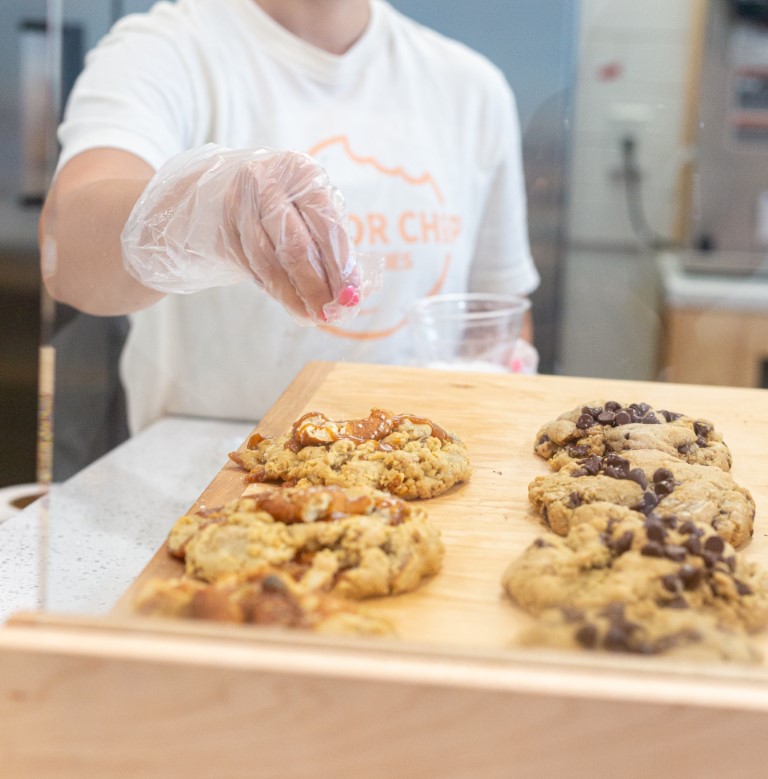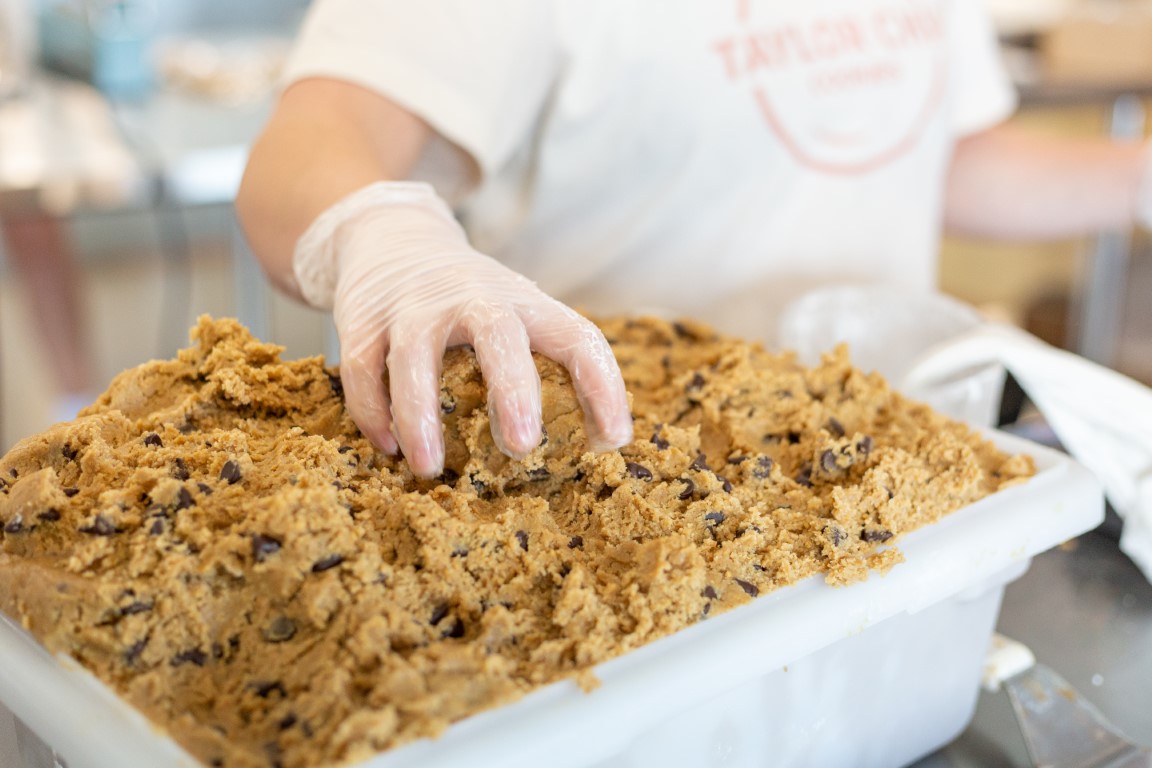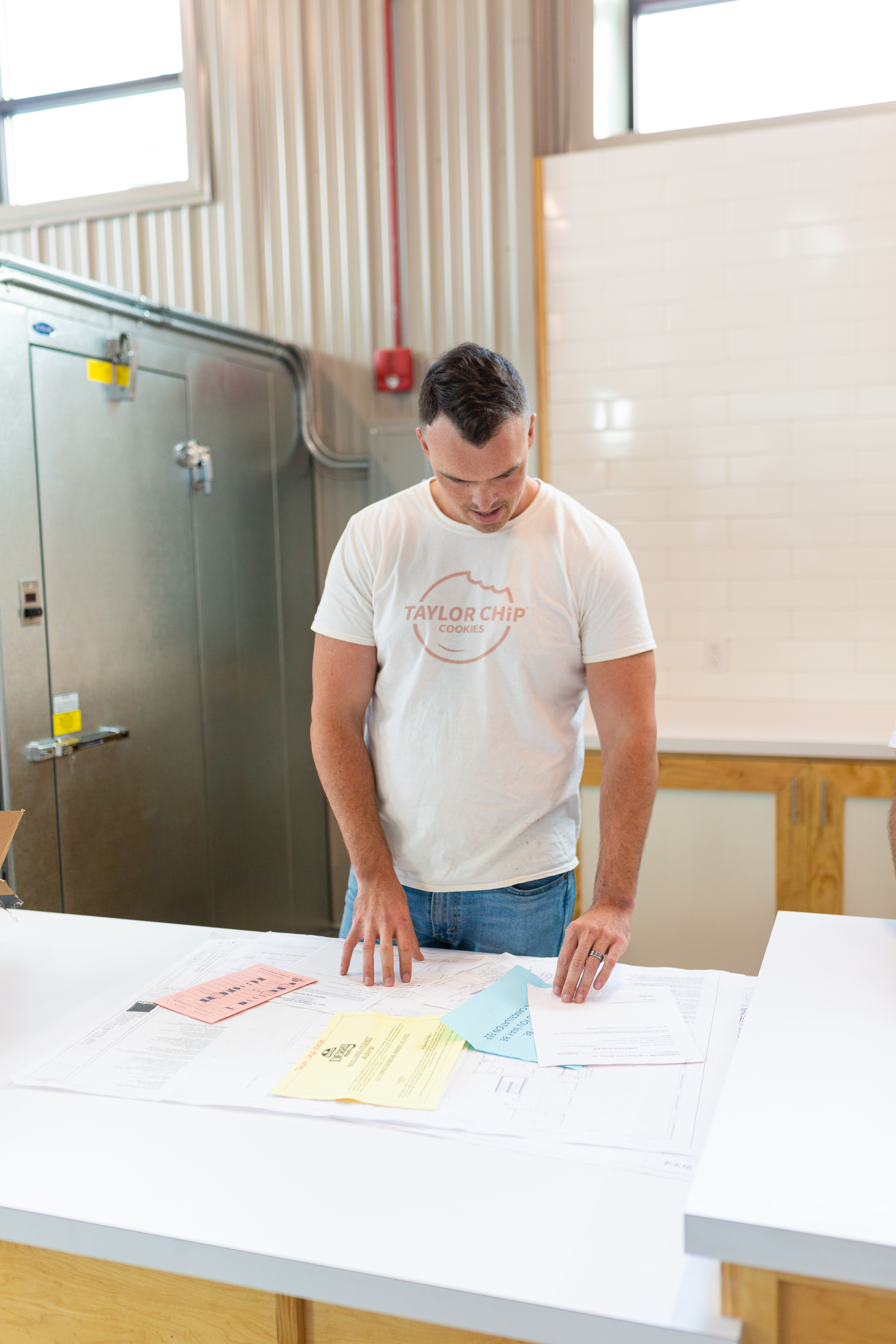Can you refreeze cookies? You can refreeze cookies, but it's important to follow guidelines to guarantee quality. Refreeze only once to maintain texture and taste, using airtight containers to prevent moisture loss and freezer burn. Fresh cookies freeze better than stale ones, and dough generally refreezes well without notable quality loss. Delicate cookies may become crumbly, while sturdy ones like chocolate chip maintain their texture. Be sure to properly thaw cookies before refreezing, making sure they haven't been at room temperature for more than two hours. Storing cookies correctly and understanding the impacts on flavor and texture will help preserve their quality. Uncover more about these essential techniques to perfect your cookie storage strategies.
Key Takeaways
- Refreezing cookies should be limited to one time to preserve texture and flavor.
- Use airtight, freezer-safe containers to prevent moisture loss and contamination.
- Ensure cookies have thawed for less than two hours before refreezing.
- Flash freeze cookies or dough before transferring to storage to prevent sticking.
- Clearly label containers with refreezing dates to track storage times.
The Science of Freezing Cookies
Understanding how different types of cookies respond to freezing can help you maintain their texture and flavor. Factors like moisture content and fat composition influence how well cookies freeze and thaw, so knowing these characteristics is essential.
Additionally, innovative freezing techniques, such as flash freezing, can preserve the quality of your cookies better than traditional methods.
Types of Cookies and Their Characteristics
Cookies come in all shapes and flavors, from chewy chocolate chip to delicate shortbread. Understanding the types of cookie dough and their characteristics can help you manage their freezing and refreezing. Sturdy cookies, such as those made from chocolate chip or oatmeal dough, tend to freeze well due to their strong structure. These cookies maintain their texture and flavor even after being frozen and thawed.
On the other hand, delicate cookies like shortbread or sugar cookies can be more challenging to freeze. Their crumbly texture may suffer, making them more susceptible to breaking or drying out. When dealing with baked un-iced cookies, consider their initial cookie condition. Cookies that are fresh and properly baked will fare better in the freezing process compared to those that are stale or overcooked.
Innovative Freezing Techniques
Freezing cookies isn't just about tossing them into the freezer; it's a process that can be optimized with innovative techniques. One effective method is to use frozen cookie dough balls rather than baked cookies. This approach allows you to bake fresh cookies whenever you want, maintaining their quality and taste.
To guarantee your cookies freeze properly, follow these steps:
- Flash freeze method: Place your cookie dough balls on a baking sheet lined with wax paper and freeze them for an hour. This prevents them from sticking together.
- Use freezer bags: Once the dough balls are solid, transfer them to freezer bags. Squeeze out as much air as possible to prevent freezer burn and preserve potential texture.
- Layer with wax paper: If you're freezing baked cookies, place a layer of wax paper between each cookie. This stops them from sticking together and makes it easier to grab just one or two.
- Seal tightly: Ensure that all bags and containers are sealed tightly. This keeps out moisture and air, which can negatively impact the cookies' texture and flavor.

Choose Your Own Delightfully Perfect Cookies.
With almost 30 flavors to choose from, you can make your box as unique as you are.
Safety and Quality Considerations
When considering refreezing cookies, you need to think about food safety guidelines to avoid potential health risks. Refreezing can also impact the texture and flavor, which might result in a less enjoyable treat.
Additionally, different ingredients in your cookies can react differently to being frozen and refrozen, affecting the overall quality.
Food Safety Guidelines
Considering the importance of food safety, it's crucial to follow guidelines to guarantee both the safety and quality of refrozen cookies. When dealing with frozen dough or homemade cookies, observing these guidelines helps prevent food safety issues while maintaining the cookies' integrity.
Here are some key points to remember:
- Use a freezer-safe container: Verify cookies are stored in airtight, freezer-safe containers to prevent freezer burn and contamination.
- Mind the storage time: Don't exceed recommended storage times. Generally, cookies can be stored in the freezer for up to three months, but always check specific recipes for guidance.
- Refreeze with caution: If cookies have been thawed at room temperature for over two hours, refreezing them could lead to food safety issues. Always refreeze them promptly if necessary.
- Label and date: Clearly mark the refreezing date on the container to keep track of storage time, verifying you consume them within a safe period.
Impact on Texture and Flavor
One key evaluation when refreezing cookies is how it affects their texture and flavor. When you refreeze cookies, the process can cause notable changes in both these aspects due to the impact on moisture levels. Initially, freezing cookies traps moisture inside, which helps retain their texture. However, when you thaw and then refreeze them, the repeated changes in temperature can lead to moisture loss or redistribution. This can make the cookies either overly dry or soggy, depending on the type of cookie and how it's been stored.
The flavor of cookies can also be compromised through refreezing. As cookies are exposed to air during the thawing process, they may absorb odors from other foods in the freezer, leading to a less pleasant taste.
Additionally, the ingredients in the cookies, such as butter or chocolate, can develop off-flavors due to the repeated freezing and thawing cycles. This is particularly noticeable in cookies with delicate flavors or those that rely on freshness for their appeal.
Therefore, while refreezing cookies is generally safe from a health perspective, it's important to evaluate how the process will impact their overall quality, especially regarding texture and flavor.
Effects of Ingredient Variations
Understanding the impact of refreezing on cookies isn't complete without examining how different ingredients affect safety and quality. Ingredient variations play a crucial role in how well cookies withstand the refreezing process, influencing both texture and overall taste.
First, consider cookies made with a high butter content. These tend to refreeze poorly because the butter can separate and cause a greasy texture. On the other hand, cookies made with margarine or shortening fare better due to their more stable fat composition.
In addition, the type of flour used in your cookie dough can affect the final texture upon refreezing. All-purpose flour often holds up better compared to cake flour, which can make cookies overly crumbly.
When it comes to baking methods, par-baking your cookie dough before freezing can help maintain a stable texture. Fully baked cookies, however, might become dry and lose their original chewiness when refrozen multiple times. Additionally, cookies with high moisture content, such as those with fruit fillings, are more prone to texture changes and potential microbial growth.
- Butter content: impacts grease and texture
- Type of flour: affects crumbly nature
- Baking methods: par-baking vs. fully baked
- Moisture content: influences microbial safety and texture
Understanding these factors will help you decide the best approach for refreezing cookies.
Best Practices for Freezing and Refreezing
To guarantee your cookies maintain their quality when freezing and refreezing, you should follow proper techniques and guidelines. Start by placing cookies in airtight containers or freezer bags, removing as much air as possible to prevent freezer burn. Regularly assess the cookies' texture and taste after each freezing cycle to determine if they're still enjoyable to eat.
Proper Techniques and Guidelines
Freezing and refreezing cookies can be a bit tricky, but following a few best practices guarantees they retain their flavor and texture. To start, you should always let your cookies cool completely before you freeze them. This prevents condensation, which can lead to soggy or stale cookies. Place the cooled cookies on a baking sheet in a single layer and freeze them for a couple of hours. This step assures they don't stick together later.
Once frozen, transfer the cookies into airtight freezer containers or wrap them tightly in plastic wrap. This helps protect them from freezer burn and preserves their taste and texture. If you need to refreeze cookies, make sure they haven't been left out at room temperature for too long to avoid them becoming stale and losing their quality.
Here are some best practices to follow:
- Cool cookies completely: Prevents condensation and sogginess.
- Flash freeze on a baking sheet: Keeps cookies from sticking together.
- Use airtight freezer containers or plastic wrap: Protects against freezer burn.
- Limit time at room temperature before refreezing: Maintains cookie quality.
Quality Assessment Methods
Evaluating the quality of your cookies before and after freezing is key to guaranteeing they remain delicious. Start by examining the cookies before refreezing. Check for any excess moisture, which can lead to soggy cookies, and verify they haven't lost their firmness. If the cookies have a firmer texture, they've likely held up well.
Next, consider the type of cookie. Delicate textures, like those in meringue or wafer cookies, may not handle refreezing well. These cookies are prone to breaking down or becoming too moist, affecting their overall quality. For sturdier cookies, like chocolate chip or oatmeal, the refreezing process is generally more forgiving.
To maintain quality, use the double wrap method when freezing cookies. First, wrap each cookie individually in plastic wrap to prevent freezer burn and excess moisture absorption. Then, place the cookies in a resealable freezer bag or airtight container. This extra layer of protection helps preserve the cookies' texture and flavor.
After refreezing, assess the cookies again for any changes. If they look and taste similar to their pre-frozen state, you've successfully refrozen them. By following these steps, you can guarantee your cookies remain enjoyable after freezing and refreezing.
Enhancing Cookie Quality
To enhance the quality of your cookies when freezing and refreezing, consider using ingredients that maintain their texture and flavor better in low temperatures, such as high-fat content butter and certain types of flour. You might also explore nutritional and cultural variations, as cookies from different traditions can offer unique benefits that withstand freezing well. By selecting the right ingredients and understanding these variations, you can greatly improve the overall quality and taste of your frozen and refrozen cookies.
Ingredients for Better Freezing Outcomes
Achieving better freezing outcomes for your cookies starts with selecting the right ingredients to enhance their quality. Using high-quality butter, sugar, and flour can make a notable difference in texture and flavor after freezing. The type of fats and sugars you use will affect how well your cookie dough freezer preserves the dough.
Consider these tips for better results:
- Fat content: Use a good-quality butter instead of margarine. It helps the cookies maintain a rich flavor and soft texture, even after freezing.
- Sugar types: Combining granulated and brown sugar gives cookies a balanced sweetness and chewiness, essential for preserving the desired texture in frozen cookie dough logs.
- Add-ins: Opt for high-quality chocolate chips, nuts, or dried fruits. These ingredients will hold up better during both the freezing and baking processes, ensuring your fresh-baked cookies taste great.
- Storage materials: Use airtight, plastic containers or heavy-duty freezer bags to store frozen drop cookie dough. This prevents freezer burn and keeps moisture out, maintaining the dough's integrity.
Nutritional and Cultural Variations
When it comes to enhancing cookie quality, understanding nutritional and cultural variations can make a substantial difference. Different cultures bring unique ingredients and techniques that can transform your cookies from scratch into something extraordinary. For instance, using almond flour in French macarons or incorporating spices like cardamom in Indian cookies can boost the flavor profile of your fresh cookies.
During the holiday cookie season, you might encounter an array of culturally-specific treats. Italian biscotti, German lebkuchen, and Mexican polvorones each bring not only diverse flavors but also nutritional differences. Some recipes might use healthier alternatives like honey instead of sugar or whole grains instead of refined flour, offering a more nutritious option without sacrificing taste.
When preparing homemade cookie dough, you can experiment with these variations to suit your nutritional preferences. For example, adding oats or flaxseeds can increase fiber content, while using dark chocolate chips can add antioxidants. By understanding these nutritional and cultural variations, you can create a cookie experience that's both delicious and tailored to your health goals.
Practical and Environmental Aspects
Refreezing cookies not only helps reduce food waste but also opens up a range of creative uses for leftovers. Instead of throwing away excess cookies, you can repurpose them into new desserts or snacks, such as cookie crumb crusts or ice cream mix-ins. This approach not only minimizes waste but also adds a touch of culinary innovation to your kitchen.
Reducing Food Waste
Reducing food waste isn't just a noble goal; it's a practical necessity that can have meaningful environmental benefits. By managing your cookie production wisely, you not only enjoy delicious treats but also contribute positively to the environment. Consider these strategies for reducing food waste:
- Bake in small batches: Instead of making large quantities of baked cookies at once, bake fresh batches as needed. This minimizes the likelihood of cookies going stale and ending up in the trash.
- Utilize frozen cookie logs: Prepare cookie dough in advance, form it into logs, and freeze it. When you're ready to bake, simply slice off what you need. This guarantees you only bake the number of cookies you plan to consume.
- Make cookie dough balls: Similar to frozen logs, you can portion your dough into individual cookie dough balls and freeze them. This allows you to bake just a few cookies at a time, reducing the chance of waste.
- Store properly: Both baked cookies and dough can be frozen and stored in airtight containers, preserving freshness and preventing spoilage.
Creative Uses for Leftover Cookies
Got leftover cookies? Don't let them go to waste. There are plenty of creative uses for those extras, and repurposing them can be both practical and environmentally friendly. One simple idea is to crumble the leftover cookies and use them as a topping for ice cream or yogurt. This adds a delightful crunch and extra flavor to your dessert without needing a new cookie recipe.
Another option is to incorporate the leftover cookies into new baked goods. Mix crushed cookies into cookie dough before baking to create a unique texture and taste. This method shortens bake time since the cookies are already partially cooked, and it's a great way to experiment with different flavors.
If you're feeling adventurous, you can transform those leftover cookies into a pie crust. Simply crush them finely, mix with melted butter, and press into a pie pan. This creates a delicious, no-bake crust that's perfect for cheesecakes or other chilled desserts.
Using leftover cookies not only reduces food waste but also encourages creativity in the kitchen. By finding innovative ways to reuse them, you're contributing to a more sustainable cooking practice while satisfying your sweet tooth.
Why Trust Our Cookie Crafting Insights?
At Taylor Chip, our journey in the world of cookie crafting began as a labor of love. Founded by Sara and Dougie Taylor in 2015, our expertise in baking has been honed through years of passionate experimentation and dedication. What started as a fun date night activity quickly evolved into a shared obsession, leading us to perfect our cookie recipes just in time for our wedding.
Our hands-on experience in developing the perfect cookie recipe gives us unique insights into the science of baking, including the intricacies of freezing and refreezing cookies. We've spent countless hours testing different ingredients, techniques, and storage methods to ensure that every cookie maintains its delicious taste and texture, even after being frozen. This practical knowledge allows us to provide you with reliable, tested advice on how to best preserve your homemade treats.
As cookie enthusiasts turned experts, we understand the importance of quality ingredients and proper techniques in creating the perfect cookie. Our journey from casual bakers to cookie perfectionists has equipped us with the knowledge to guide you through the nuances of cookie storage, including the dos and don'ts of refreezing. Trust in our expertise to help you maintain the quality of your cookies, whether you're baking for yourself or preparing treats for special occasions.
Frequently Asked Questions
How Long Can Refrozen Cookies Last in the Freezer?
The current question you're asking is about the duration refrozen cookies can last in the freezer. Typically, you can keep refrozen cookies for up to three months. Make certain they're well-wrapped to maintain their quality.
Can You Refreeze Cookies That Have Been Left Out Overnight?
You shouldn't refreeze cookies that have been left out overnight. Bacteria can grow on them, making them unsafe to eat. It's better to enjoy them fresh or store them properly in the first place.
Do Different Types of Cookies Refreeze Differently?
Yes, different types of cookies refreeze differently. For example, delicate cookies like macarons might suffer more than sturdier ones like chocolate chip. Always check for texture and taste changes after refreezing to verify quality.
Can You Refreeze Cookies With Frosting or Icing?
You can refreeze cookies with frosting or icing, but it's not ideal. The texture might change, and the icing could become runny. If you must, freeze them quickly and store them in airtight containers.
How Does Refreezing Affect the Taste of Cookies?
Refreezing affects the taste of cookies by making them less fresh and altering their original flavor. You might notice a slight freezer burn or a change in texture, which can make them less enjoyable to eat.
Conclusion
In summary, freezing and refreezing cookies can be done safely if you follow proper techniques to maintain their quality and taste. Make sure you wrap cookies tightly to prevent freezer burn, label them for easy identification, and thaw them correctly to preserve texture. While refreezing is possible, limit it to avoid compromising flavor and freshness. By adhering to these guidelines, you can enjoy delicious cookies anytime without sacrificing their quality.










